- Joined
- Apr 24, 2010
- Messages
- 12,923
- Reaction score
- 27,656
- Golden Thread
- 1
- Location
- Upper Canada 🇨🇦
- 🥇 Banner finds
- 1
- 🏆 Honorable Mentions:
- 3
- Detector(s) used
- XP Deus, Lesche Piranha 35 Shovel & 'Garrett Carrot'
- Primary Interest:
- Relic Hunting
I hunted an old school site for about 4hrs today in the town of Haydon, ON. I found $3.50 in modern change, 25' of copper tubing in the ground and what I hope are 2 musketballs! They're both made of iron; the smaller one measures 13mm and the larger 19mm . . . the Barbers are just for size reference.
The early history of Haydon began with a crown grant of 200 acres to a Joseph Winters in 1802 and continued with slow growth until latter half of the century. A tributary of the Bowmanville Creek greatly influenced the hamlet’s growth and supported numerous mills, the first of which was the “Haydon Mill”, (a grist and saw mill) built by Charles Bates of the 8th Company, Darlington Regiment in 1847. He built the mill some two years after he planned and laid out the village. It would seem that this mill named “Haydon Mill” later lent it’s name to the hamlet.
The Haydon Public school was built in 1876. It is a brick structure that began as a one room school and has been slightly renovated to include a meeting room, a fully equipped kitchen and 2 washrooms. The building retains many of its historic features including the original wall to wall slate blackboard which is still popular & useful today. The school closed in 1965 when regional schools came into being.
Can anyone tell me if these are musketballs or not?
Happy hunting this weekend everyone,
Dave
The early history of Haydon began with a crown grant of 200 acres to a Joseph Winters in 1802 and continued with slow growth until latter half of the century. A tributary of the Bowmanville Creek greatly influenced the hamlet’s growth and supported numerous mills, the first of which was the “Haydon Mill”, (a grist and saw mill) built by Charles Bates of the 8th Company, Darlington Regiment in 1847. He built the mill some two years after he planned and laid out the village. It would seem that this mill named “Haydon Mill” later lent it’s name to the hamlet.
The Haydon Public school was built in 1876. It is a brick structure that began as a one room school and has been slightly renovated to include a meeting room, a fully equipped kitchen and 2 washrooms. The building retains many of its historic features including the original wall to wall slate blackboard which is still popular & useful today. The school closed in 1965 when regional schools came into being.
Can anyone tell me if these are musketballs or not?

Happy hunting this weekend everyone,
Dave
Amazon Forum Fav 👍
Attachments
Upvote
0



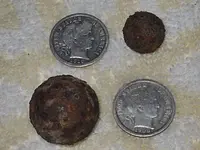
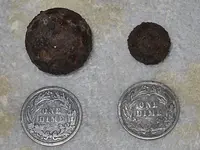
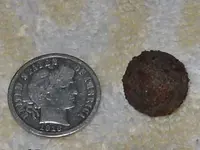
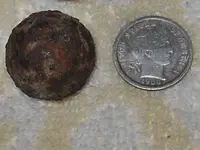

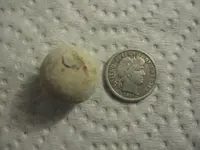


 Makes a lot of sense though why these guys used lead bullets instead of iron, otherwise they'd be having to buy a new musket every year!
Makes a lot of sense though why these guys used lead bullets instead of iron, otherwise they'd be having to buy a new musket every year! 

 Now that's something I've never hear my wife say!
Now that's something I've never hear my wife say! 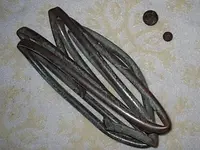
 But when the majority of people here are suggesting that I have, "some sort of case shot or ball bearings" , what can I do?
But when the majority of people here are suggesting that I have, "some sort of case shot or ball bearings" , what can I do? 

 Yup, I covered up that hole really fast!
Yup, I covered up that hole really fast!  ..And covered it back up quickly.
..And covered it back up quickly. 